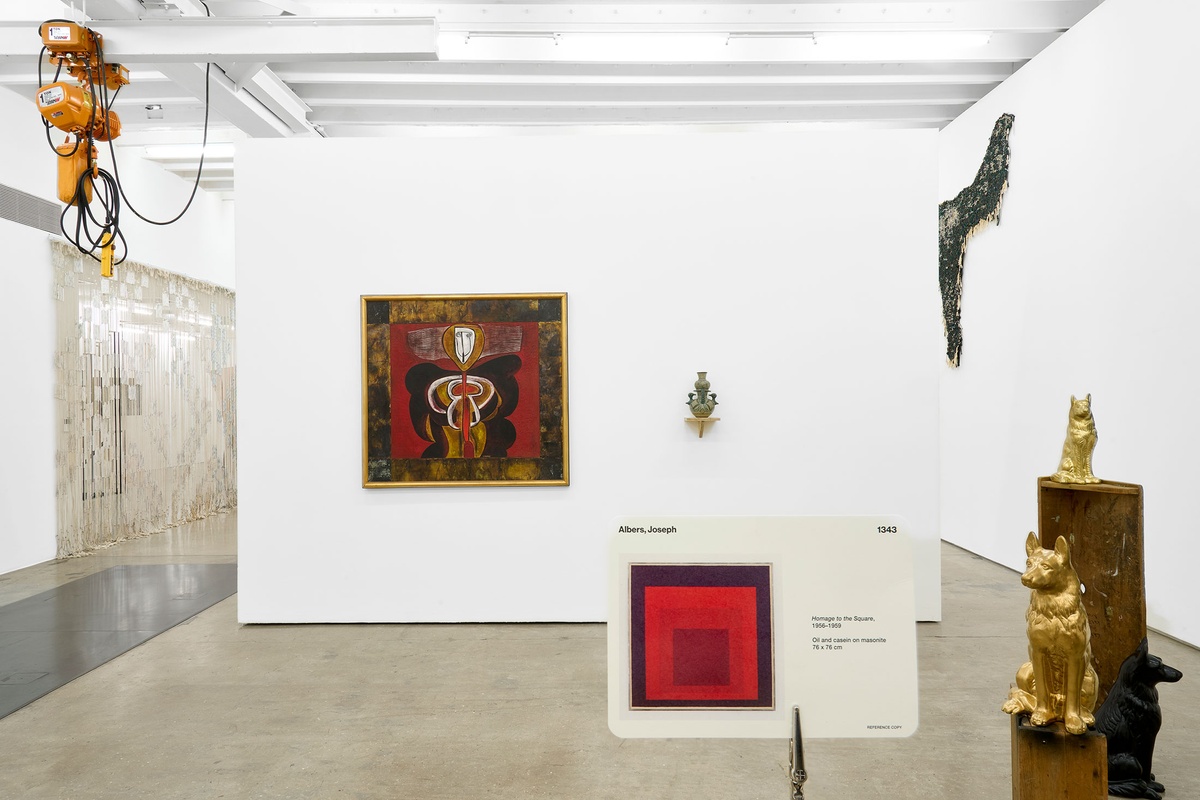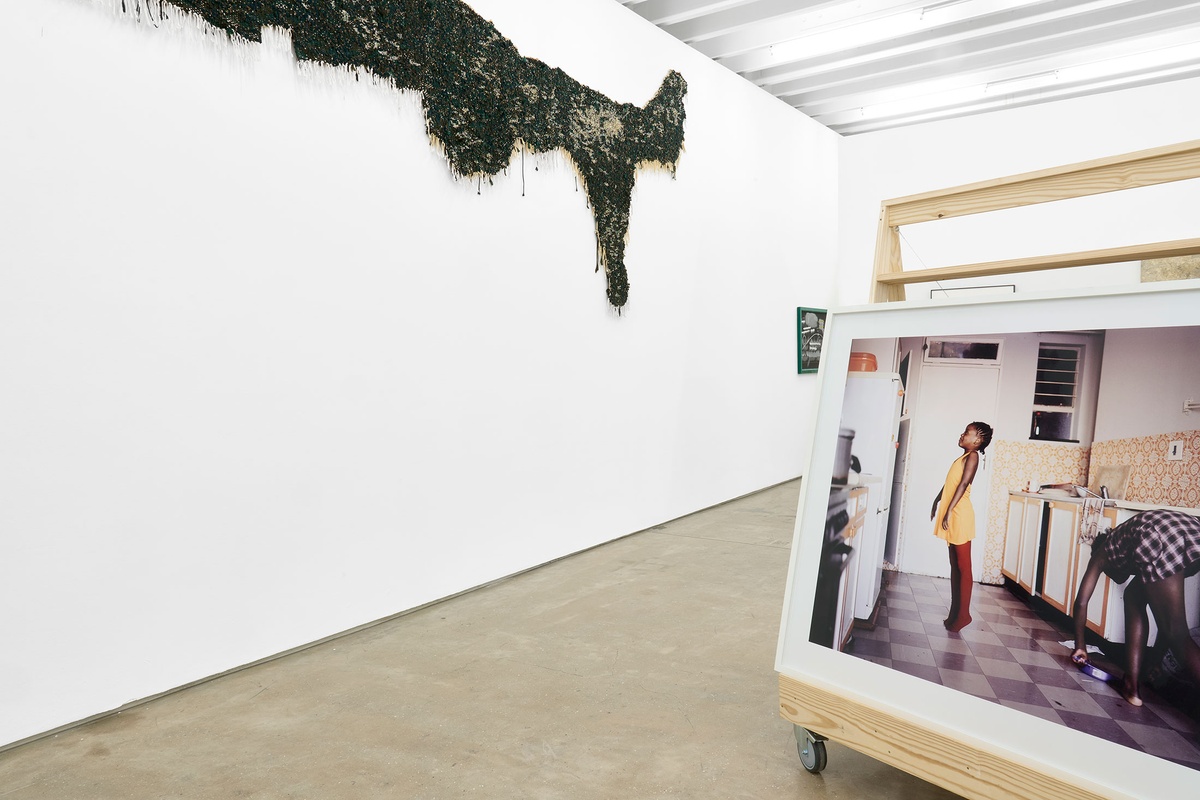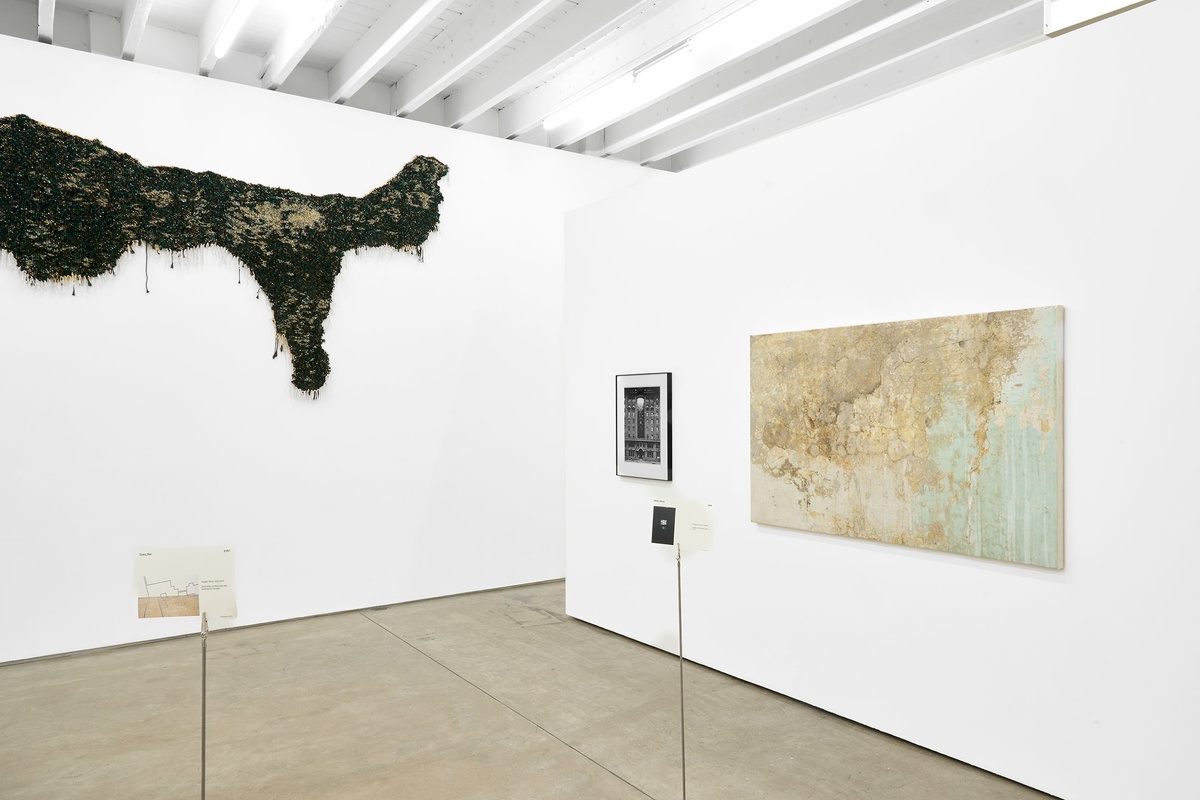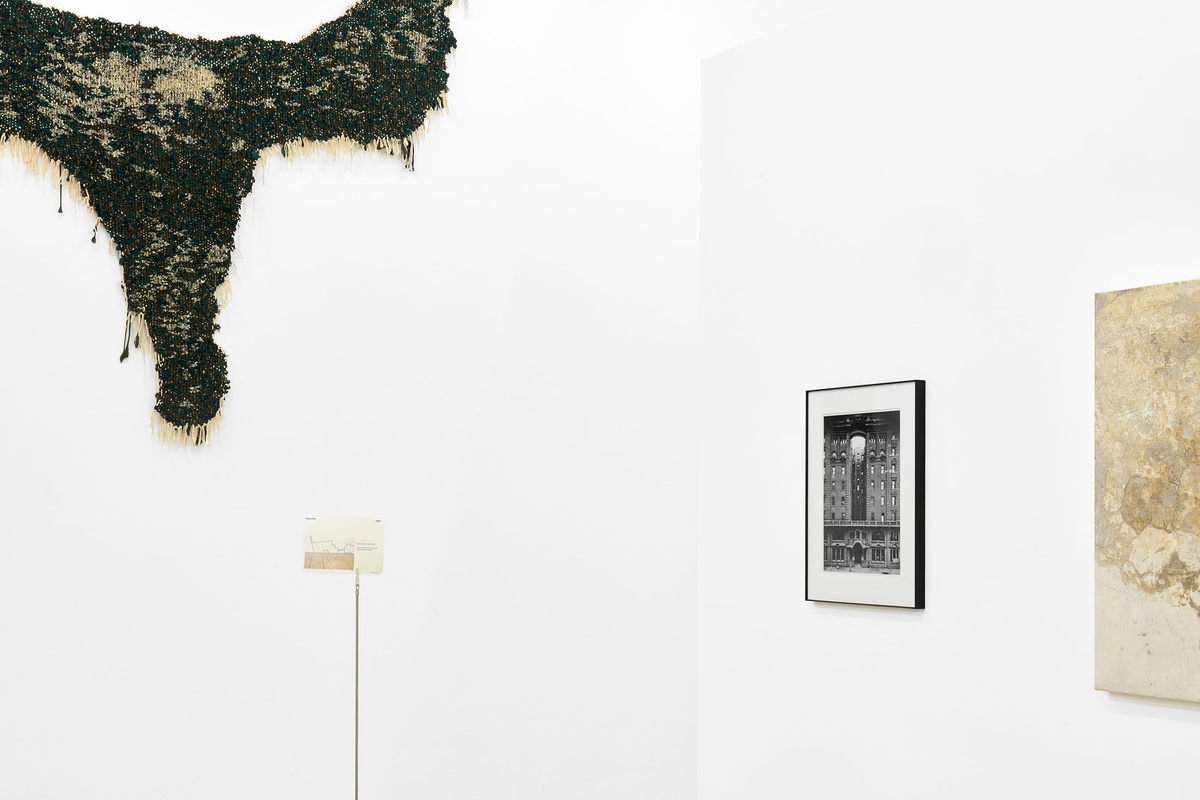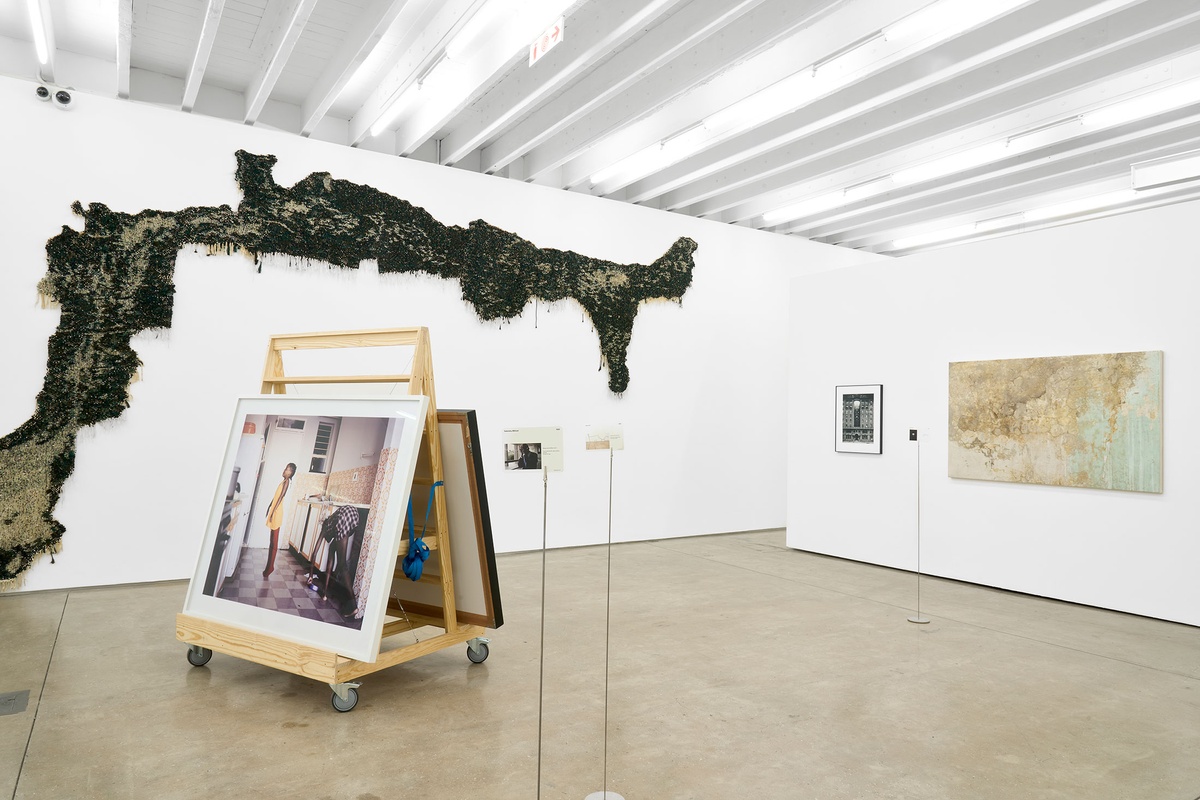Igshaan Adams
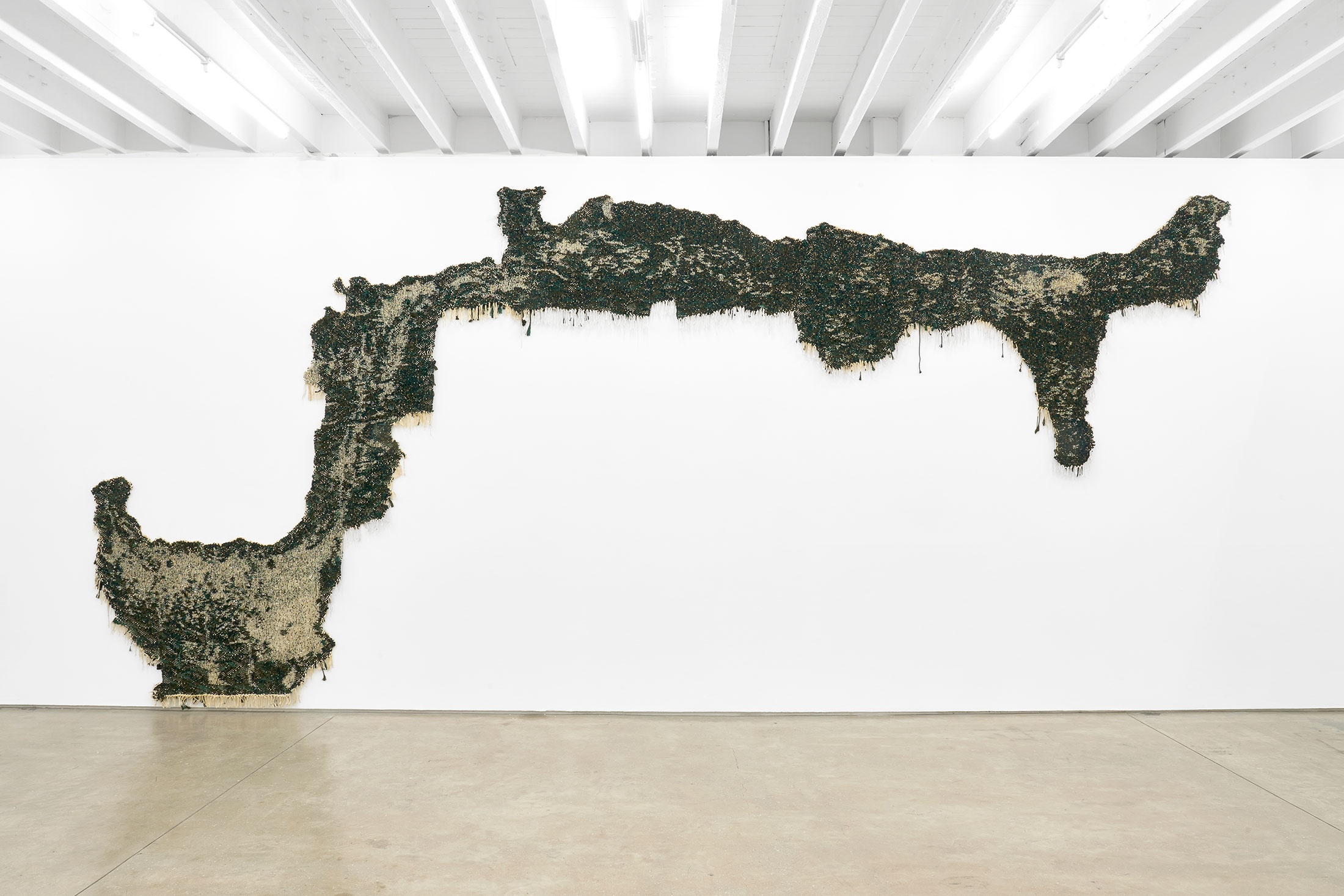
The title of the work, 11B Larch weg (ii), is a physical address that corresponds to a duplex in Bonteheuwel, Cape Town. It belonged to a woman named Priscilla who took care of Igshaan Adams’ elderly grandparents at the end of their life. Although it has immense scale, there is a quietness to the woven work as it documents the way Priscilla’s linoleum wore away from repeated treading, front to the back, door to window, kitchen to chair, and back again. For Adams, linoleum touches on poverty, class, taste and value – the flooring is cheap and functional but difficult to maintain and considered kitsch – and in that context, the synthetic material becomes an accidental archive unique to each Bonteheuwel home. “Priscilla’s life opens up in a very amazing way,” curator Hendrik Folkerts notes in a 2022 conversation with Adams for Art Institute Chicago, “You can see where she was sitting by the door looking out of the window, and you can see where her feet were when she sat on the couch…”
11B Larch weg (ii) is one of the few translations of a home environment drawn in a pattern like those of Adams’ ‘desire lines’ (visible walkways that emerge from habitual use). His mappings of the chosen paths people take through velds, across highways and around exterior paths (independently of those constructed by town planners and legislators) more often follow this cartographic, continental, snaking form. It also has a mirrored counterpart: 11B Larch weg (i), a golden duplicate of the deep green 11B Larch weg (ii). Together, the two pieces act as shadow and reflection of the real-world ‘object’, an intangible event: the daily path carved by Priscilla’s private movements through 11B Larch Road.
b.1982, Cape Town
Collected under the loose description of tapestry, Igshaan Adams’ woven works offer a haptic meditation on the changeability of being, which is never static but always reworked, stitched and unstitched. To the artist, the ritual repetition necessary to his medium presents itself as spiritual simile; each bead strung a material dhikr. Much like the ninety-nine names of Allah are chanted in Sufi practice, that they might wake the dormant divine within the speaker, so weaving too is an embodied commitment to slow accumulation and transformation. Bearing witness to life’s traces and traumas as inscribed in overlooked spaces – particularly those of Bonteheuwel, a low-income suburb on the Cape Flats where Adams was raised – the artist transcribes desire lines across fields and worn paths on linoleum floors, honouring the passages of time and people that shaped them. Adams’ work is marked by both a distinct, even sensual, pleasure in the tactile, and a lyrical invocation of the immaterial; the patina of the past distilled in objects of singular beauty and quiet dedication.
